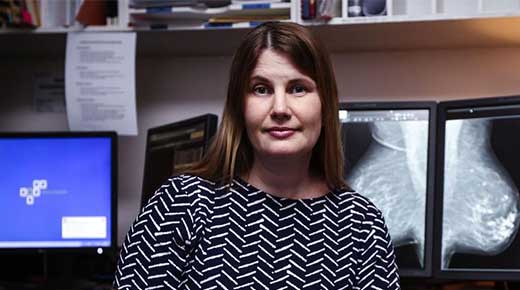
Towards better breast screening for Australian women
Published: 10/10/19 12:21 AM

Jennifer Stone
Early detection increases the likelihood of breast cancer survival. While population-based breast screening provides the best chance of early detection, it doesn’t provide all women the same level of detection.
Unbeknownst to many women, the density of their breast tissue can impact on the ability of the mammogram to detect tumours. Dense breast tissue is coming to light as one of the strongest predictors of breast cancer risk on par with carrying a mutation in the BRCA1 and BRCA2 genes.
On a mammogram, the white sections indicate dense breast tissue. Tumours also show up as white and can be obscured if a woman has dense breast tissue. If the mammogram is unable to distinguish a cancerous tissue from healthy dense tissue, tumours can go undetected.
It is becoming increasing clear that women need to be told about their breast density, both because of the impact of dense breast tissue on the effectiveness of a mammogram in finding cancer and because of the increased risk of breast cancer arising from high density.
Measuring breast density is on the cusp of becoming a useful health tool for women, however, more information is needed before it can be incorporated into public health programs.
In conjunction with BreastScreen WA, one of the only state-funded screening programs which informs women of their breast density, Dr Jennifer Stone aims to find out what women do with this information. She will survey women who receive the information about breast density and those that do not, to quantify perceptions, intentions and post-screening behaviour.
This study will be the largest and most comprehensive investigation thus far of the impact of informing screening participants that they have dense breasts and will provide the basis for BreastScreen programs to report measures of breast density to participants in future.
Dr Stone will also investigate the prevalence of dense breast tissue in specific populations, including Aboriginal and Torres Strait Islander women (for whom no information currently exists) and younger women (an established risk factor), to help inform public health improvements for these women.
